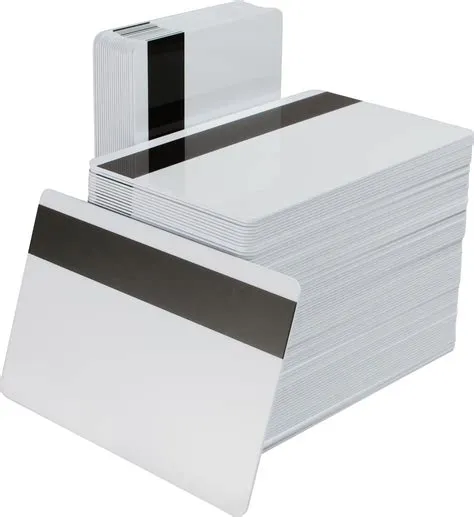Hey there! Ever stopped to think about your business ID card? It’s more than just a piece of plastic; it’s a mini-billboard for your company, a key to access, and a representation of your brand. In today’s fast-paced world, a boring, outdated ID card just won’t cut it. So, let’s dive into the exciting world of innovative ID card design trends, and explore how you can elevate your company’s image with a truly memorable card.
The Evolution of the ID Card: From Basic to Brilliant
Remember those old, flimsy ID cards? The ones that faded in the sun, bent easily, and offered about as much security as a chocolate chip cookie? Those days are thankfully long gone! Modern ID card design has exploded with creativity and technology. We’ve moved beyond simple text and logos; we’re talking about sleek designs, advanced security features, and sustainable materials. It’s a whole new ball game, and you don’t want to be left behind.
Think about it: your ID card is the first impression many people get of your company. Do you want that impression to be dull and forgettable, or sharp, modern and memorable? The answer, I’m sure, is pretty clear. A well-designed ID card reflects professionalism, attention to detail, and a forward-thinking approach. Let’s explore some of the top trends shaping the future of business ID cards.
Trending Designs: A Visual Feast
One of the most significant trends is the move towards minimalist designs. Think clean lines, bold typography, and a strategic use of color. Less is definitely more! This approach not only looks modern but also enhances readability and makes key information stand out. It’s all about creating a visually appealing card that’s easy to understand at a glance. Want some inspiration? Check out our gallery of modern ID card design ideas.
Another big trend is incorporating your brand’s identity seamlessly. Think about using your brand’s colors, fonts, and imagery on the card. This creates a cohesive brand experience and strengthens brand recognition. It’s like a miniature version of your company’s website or storefront – a consistent visual representation.
Beyond aesthetics, functionality is king. We’re seeing a rise in technology-integrated ID cards. These cards often include features like magnetic stripes (more on that below!), contactless chips for access control, or even QR codes linking to employee information or company resources. It’s a smart way to streamline operations and improve security.
The Magnetic Stripe Advantage: Still Relevant?
You might be thinking, “Magnetic stripes? Aren’t those outdated?” And while technology has certainly advanced, the humble magnetic stripe remains a valuable asset in many business ID cards. Why? Because they’re reliable, cost-effective, and widely compatible with existing access control systems. Think of it as the trusty workhorse of ID card technology – it may not be flashy, but it gets the job done effectively. A well-designed ID card can seamlessly integrate a magnetic stripe without compromising the overall aesthetic appeal. This is a great way to leverage existing infrastructure while enhancing the functionality of your ID cards. You can learn more about how to create better ID cards, including integrating magnetic stripes in our blog on ID card design.
Sustainability: A Growing Concern
We’re becoming more aware of our environmental footprint, and that includes ID cards. The demand for eco-friendly ID card materials is surging. Companies are choosing recycled materials, plant-based plastics, and sustainable printing techniques to minimize their impact. It’s not just a trend; it’s a responsible choice that resonates with environmentally conscious customers and employees. Discover more about sustainable options and environmentally friendly solutions from our blog on eco-friendly business solutions.
Furthermore, eco-friendly design extends beyond materials. Consider using eco-friendly printing techniques like soy-based inks to minimize the environmental impact of your ID card production. The small changes can make a big difference in reducing your carbon footprint.
Industry-Specific Designs: Tailoring to Your Needs
Just like there’s no one-size-fits-all approach to business, there’s no one-size-fits-all approach to ID card design. The ideal design will vary drastically depending on your industry. A healthcare ID card will have different requirements than a construction company’s. For example, a healthcare facility might prioritize quick identification and security features, while a construction company might focus on durability and weather resistance. Check out our blog on industry-specific ID card designs to learn more about customizing your cards to meet the specific requirements of your industry.
For deeper insights, explore our curated selection of industry-specific design trends. Discover best practices and get inspiration from various sectors, from manufacturing to healthcare, and explore how to tailor design to your industry by clicking here: Design Trends in Industry-Specific ID Cards
Personalization and Customization: A Touch of Uniqueness
In a sea of sameness, personalization stands out. Adding a personal touch to your ID cards, such as employee names or photos, helps build a sense of belonging and strengthens employee engagement. This can even lead to increased employee retention! Explore the possibilities of customization and personalization in ID card design and elevate your employee experience.
Security and Access Control: Protecting Your Assets
Security remains a top priority. Your ID card shouldn’t just look good; it needs to protect your business. Think about incorporating features like holograms, watermarks, or UV printing to deter counterfeiting. Many modern ID cards also incorporate features for access control, such as proximity readers or contactless chips. We can help you understand security best practices and access control solutions, learn more here: Security and Access Control. Don’t underestimate the importance of security. A robust ID card system is a key component of a comprehensive security strategy.
The Future of ID Cards: What’s on the Horizon?
The world of ID card design is constantly evolving. We’re likely to see even more integration of technology, with features like biometric authentication and digital ID integration becoming increasingly common. Think about virtual ID cards on smartphones, making access easier and more secure. Explore the exciting trends in digital ID, learn more here: Digital ID Trends
Conclusion
Designing a business ID card is more than just choosing a color scheme. It’s a strategic decision that reflects your brand, enhances security, and contributes to a positive employee experience. By incorporating innovative design trends, sustainable materials, and advanced technologies, you can create an ID card that is both visually appealing and functional. Remember, your ID card is a reflection of your company – make it count!
FAQs
- What is the most important factor to consider when designing a business ID card? The most important factor is to consider your specific business needs and goals. This includes factors like security requirements, brand identity, and budget constraints.
- Are magnetic stripe ID cards still relevant in today’s technological landscape? Yes, magnetic stripe ID cards are still a cost-effective and reliable option for many businesses, especially when integrated with existing access control systems.
- How can I ensure my ID cards are environmentally friendly? Choose recycled or plant-based materials and opt for eco-friendly printing techniques. Look for certifications and sustainable sourcing to make informed decisions.
- What are some innovative features I can incorporate into my business ID cards? Consider integrating contactless chips, QR codes linking to employee information, or biometric authentication features for enhanced security and convenience.
- How can I personalize my ID cards to improve employee engagement? Include employee names and photos, and consider using colors and designs that reflect your company culture and values.

